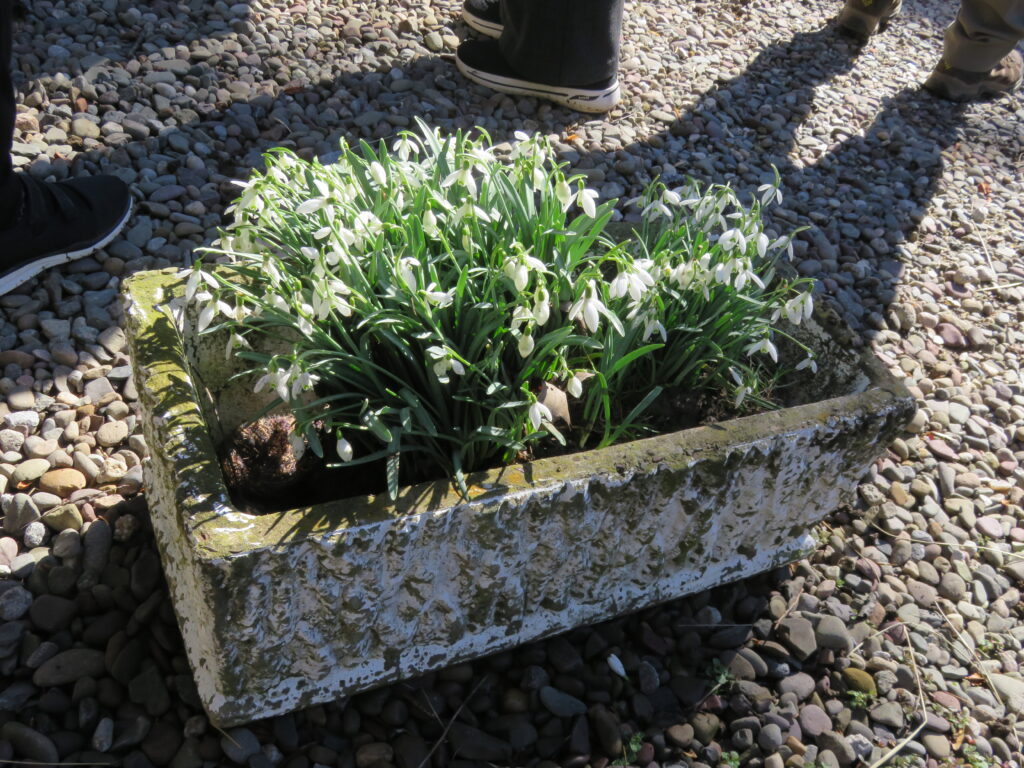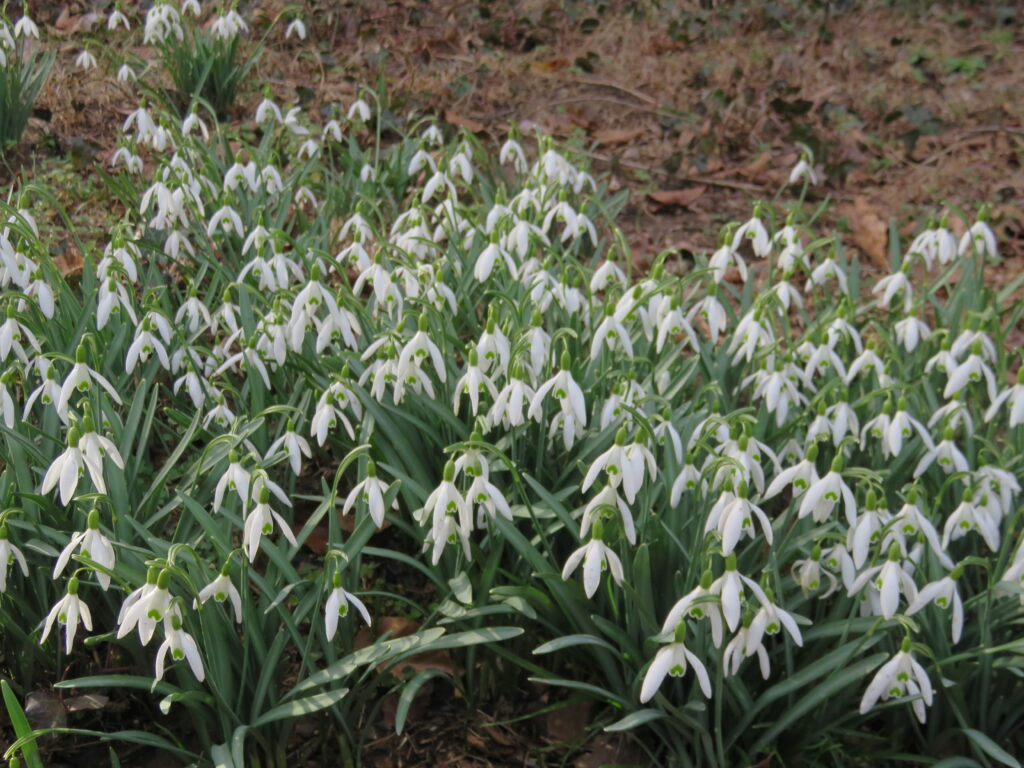
Snowdrop (Galanthus spp.) are grown in both cold and moderate winters. In the U.S. snowdrops thrive where winters are cool (USDA hardiness zones 3-8). There are about 19 species of Galanthus – in the amaryllis family (Amaryllidaceae). They’re native to the cool woodland and mountainous regions of southern Europe and Asia Minor. They tend to struggle in warm climes in the U.S. like south Texas and southern California.
Snowdrops are among the first spring flowers to bloom, often around mid-February into early March. Purchase bulbs in fall and plant immediately after you receive them. Do not buy the bulbs too far ahead of time as they may dry out and lose viability. Space bulbs 3 – 4 inches apart. These tiny plants require very little maintenance. Snowdrops grow in a variety of garden spots.
Plant snowdrop bulbs 2-3 inches deep in soil that is prepared and ready for planting. Set bulbs with the thin end (tip) facing up. Feed with any commercially labelled bulb fertilizer to get the snowdrops off to good start. Each year in late fall, spreading 1-2 inches of well-refined organic mulch or compost should provide nutritional support to the snowdrop bed.

Snowdrops are a collector’s dream. Try some of these favorites:
- G. elwesii – “giant snowdrop” and grows to be twice as tall as G. nivalis.
- G. nivalis ‘Flore Pleno’ produces double flowers.
- G. nivalis ‘Sam Arnott’ – large flowered, vigorous and fragrant.
- G. nivalis ‘Viridi-Apice‘ has prominent green blotch on its petals.
- G. ‘White Dream’ has a white stripe on leaves.
- G. woronowii – “green snowdrop” – broad green leaves and little green mark on inner floral tepals.
Numerous other cultivars are listed. One authority lists over 500 cultivars – most primarily available in Europe. Snowdrops can be mixed with other early blooming bulbous beauties such as Glory-of-the-snow (Chionodoxa), Winter aconite (Eranthis hyemalis), and Crocus (Crocus spp.).
Snowdrops prefer full sun (at least 6 or more hours of direct sunlight daily). Grow snowdrops in a loose, well-drained soil with lots of humus added. They don’t thrive in heavy clay soil. Once snowdrops have finished blooming, allow the foliage to yellow naturally and wither away.
Snowdrops come up every year, and multiply and spread over time; in fact, they are easy to naturalize. Every few years lift and divide the bulbs when you wish to propagate snowdrops.
Snowdrops are disease, insect and deer resistant, and critter-proof. They are toxic to animals and humans; keep pets and children away.
Snowdrop collectors, called “galanthophiles”, attend winter snowdrop meetings to buy new plant variants and other minor bulbs. Snowdrops and many minor bulbs are hard to find at garden shops. Brent and Becky’s Bulbs, an online
Snowdrop collectors, called “galanthophiles”, attend winter snowdrop meetings to buy new snowdrop variants and other minor bulbs. Snowdrops and other minor bulbs are hard to find at garden shops. Brent and Becky’s Bulbs, an online bulb emporium in Gloucester VA, is a personal favorite.

 Posted in
Posted in 
